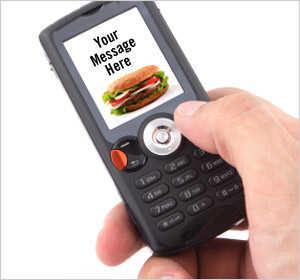Your customers are not confined to their homes or offices. Why should your marketing be? It’s time to cut the cord and set your marketing-mix free to keep up with your active customers.
More and more businesses are realizing the potential of mobile devices as a viable medium for call-to-action advertising. And don’t think cell phones are the only mobile medium worth considering. There is a plethora of technology that offers mobility and convenience to its users who are embracing this new lifestyle wholeheartedly. Mobile phones still make up the majority, but many other devices are fast becoming popular and offer opportunities to marketers for reaching their customers where ever they may be.
Here are examples of other mobile devices:
- E-Readers: (Amazon Kindle, Barnes & Noble Nook, and Sony Reader) offer many opportunities to market to consumers on their mobile reading devices
- Smartbooks and Tablet PCs: You got it–Ipad is one. It combines functions of eReader with the netbook and much more. Lower mobile internet rates and decreased costs of compact computers are opening up new possibilities for marketers
- Portable Entertainment Players: Mini gaming devices and MP3 players that connect to a network and offer marketers opportunities to brand content and applications
- GPS, Navigation Devices: Location based real-time marketing is going to be the next big thing; it’s time marketers, who are not already taking advantage of localization opportunities, consider this growing medium
As marketers we need to stay on top of the game and provide custom marketing solutions to match the unique opportunities that each of these mobile devices offer. Here are some types of mobile marketing channels that you may consider exploring, depending on your target audience preferences:
Types of Mobile Marketing
- SMS: (short message service): Also known as ‘texting’: Advertisers can send relevant marketing messages in form of texts
- MMS: (multi-media message service): Marketing messages that utilize multiple, rich media elements such as images, video and audio
- Mobile Applications: The ads can be hosted inside the application design and logic. The applications comprise of managed platforms, virtual machines, native applications and widgets
- Bluetooth Wireless Proximity Based Marketing: It works like local TV advertising on cable or network channels where a customer in a particular location will be served custom ads for that area. You will receive an ad or a message based on the location your wireless device is picking up
- Location-Based Marketing: Delivers multi-media directly to the user of a mobile device dependent upon their location via GPS technology
- QR Codes (quick-response barcodes): Allows customers to quickly learn more about a business, by visiting a mobile version of their business page on a mobile phone that is enabled to scan the bar code
- Pay Per Call Mobile (also called click-to-call): Pay per call is advertising that generates a billable event only when the reader of the ad does something–in this case, makes a phone call. A mobile ad can contain a phone number that the customer can select and call instantly from their cell phone
- Voice Marketing: Voice broadcasting calls numbers from a computer managed list and plays a pre-recorded message to the customer
- Mobile Banner Ads: Like standard banner ads for desktop web pages but smaller to fit on mobile screens and run on the mobile content network
If you are promoting your products to customers in 2010 and beyond, you must adopt emerging media channels that keep pace with your customers who are increasingly becoming more tech savvy. Many of your potential target audience consider their communication and entertainment devices an extension of themselves. You have got to mix it up to find the optimal marketing combination to target them!


